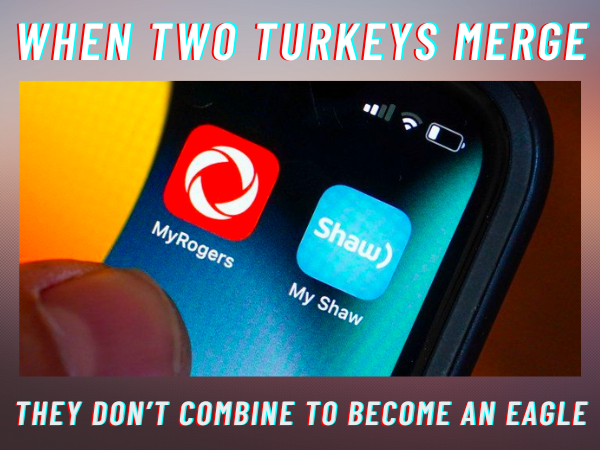Adam Kotsko posted a hilarious Twitter poll a couple of days ago, and the results are in:
Also worth reading
See my article: Arguments for staying away from crypto, NFTs, and “Web3” in general.
Adam Kotsko posted a hilarious Twitter poll a couple of days ago, and the results are in:
See my article: Arguments for staying away from crypto, NFTs, and “Web3” in general.
This chart’s been making the rounds on LinkedIn recently — it’s the Benner Cycle, an observation and prediction made by farmer Samuel Benner, who noticed that markets follow a regular cycle of hard times, good times, and panics.
It’s an interesting idea that might be worth lining up with the one I had about cycles in computer innovations:
One of the challenges that we’ll face in AI is bias — not just in the data, but the influencers as well. Consider this tweet from @OnPageLeads:
Take a closer look at the original drawing made by the child…
…and then the AI-generated photorealistic image:

Tech influencer Robert Scoble, societally-blind gadget fanboy that he is, was quick to heap praise on the tweet. Thankfully, he was quickly called out by people who saw what the problem was:

Of course, this kind of structural racism is nothing new to us folks of color. The problem is criticism of this kind often gets shut down. The most egregious case of this was Google’s firing of AI ethicist Timnit Gebru, who has warned time and again that unmoderated AI has the power to enhance societal racism.
You may have heard of recent ex-Googler Geoffrey Hinton, who’s making headlines about sounding the alarm about possible existential threats about AI. He was oddly silent when Google was firing Gebru and others for saying that AI could harm marginalized people.
In fact, he downplayed their concerns in this CNN interview:
“Their concerns aren’t as existentially serious as the idea of these things getting more intelligent than us and taking over.”
Geoffrey Hinton, CNN, May 2, 2023.
My only reply to Hinton’s remark is this:

For more about Timnit Gebru and her concerns about AI — especially a lack of focus on ethics related to it — check out this podcast episode of Adam Conover’s Factually, featuring Gebru and computational linguistics professor Emily Bender:
Almost exactly three years ago and about a month into the pandemic, Startup Digest Tampa Bay published my article where I suggested that the 2020 pandemic might be hiding some world-changing innovations that we didn’t notice because of everything going on, just as the 2008 downturn did.
My article, titled Reasons for startups to be optimistic, was based on journalist Thomas Friedman’s theory: that 2007 was “one of the single greatest technological inflection points since Gutenberg…and we all completely missed it.” It’s an idea that he put forth in What the hell happened in 2007?, the second chapter of his 2016 book, Thank You for Being Late.
In case you’re wondering what the hell happened around 2007:
It’s hard to spot a “golden age” when you’re living in it, and it may have been even more difficult to do so around 2007 and 2008 because of the distraction of the 2008 financial crisis.
In 2020 — 13 years after 2007 — we had the lockdowns and a general feeling of anxiety and isolation. I was about a week into unemployment when Murewa Olubela and Alex Abell approached me with an opportunity to write an article for Startup Digest Tampa Bay.
I took the optimistic approach, my preferred approach to life, and wrote about how there could very well be world-changing developments happening at that moment, and that we might not notice them because we were dealing with COVID-19, improvising masks and PPE, hoarding toilet paper and Clorox wipes, and binge-watching Tiger King.

When ChatGPT was released in late November 2022, I showed it to friends and family, telling them that its underlying “engine” had been around for a couple of years. The GPT-3 model was released in 2020, but it went unnoticed by the world at large until OpenAI gave it a nice, user-friendly web interface.
That’s what got me thinking about my thesis that 2020 might be the start of a new era of initially-unnoticed innovation. I started counting backwards: 2007 is 13 years before 2020. What’s 13 years before 2007?

1994. I remember that year clearly — I’d landed a job at a CD-ROM development shop, and was showing them something I’d seen at the Crazy Go Nuts University computer labs that had just made its way to personal computers: the browser, and more specifically, Netscape Navigator. What’s 13 years before 1994?

1981. That’s the year the IBM PC came out. While other desktop computers were already on the market — the Apple ][, Commodore PET, TRS-80 — this was the machine that put desktop computers in more offices and homes than any other. What’s 13 years before 1981?
1968. You don’t have any of the aforementioned innovations without the Mother of All Demos: Douglas Englebart’s demonstration of what you could do with computers, if they got powerful enough. He demonstrated the GUI, mouse, chording keyboard, word processing, hypertext, collaborative document editing, and revision control — and he did it Zoom-style, using a remote video setup!
With all that in mind, I created the infographic at the top of this article, showing the big leaps that have happened every 13 years since 1968.
If you’re feeling bad about having missed the opportunities of the desktop revolution, the internet revolution, or the smartphone revolution, consider this: It’s 1968, 1981, 1994, and 2007 all over again. We’re at the start of the AI revolution right now. What are you going to do?
The Mother of All Demos (1968): What Douglas Englebart demonstrates is everyday stuff now, but back when computers were rare and filled whole rooms, this was science fiction stuff:
The iPhone Stevenote (2007): Steve Jobs didn’t just introduce a category-defining device, he also gave a master class in presentations:
What the hell happened in 2007? (2017): Thomas Friedman puts a chapter from his book into lecture form and explains why 2007 may have been the single greatest tech inflection point:
Here’s the money quote from his lecture:
I think what happened in 2007 was an explosion of energy — a release of energy — into the hands of men, women, and machines the likes of which we have never seen, and it changed four kinds of power overnight.
It changed the power of one: what one person can do as a maker or breaker is a difference of degree; that’s a difference of kind. We have a president in America who can sit in his pajamas in the White House and tweet to a billion people around the world without an editor, a libel lawyer or a filter. But here’s what’s really scary: the head of ISIS can do the same from Raqqa province in Syria. The power of one has really changed.
The power of machines have changed. Machines are acquiring all five senses. We’ve never lived in a world where machines have all five senses. We crossed that line in February 2011, on of all places, a game show in America. The show called Jeopardy, and there were three contestants. Two were the all-time Jeopardy champions, and the third contestant simply went by his last name: Mr. Watson. Mr. Watson, of course, was an IBM computer. Mr. Watson passed on the first question, but he buzzed in before the two humans on the second question. The question was “It’s worn on the foot of a horse and used by a dealer in a casino.” And in under 2.5 second, Mr. Watson answered in perfect Jeopardy style, “What is a shoe?” And for the first time, a cognitive computer figured out a ton faster than a human. And the world kind of hasn’t been the same since.
It’s changed the power of many. We, as a collective, because we’ve got these amplified powers now, we are now the biggest forcing function on and in nature — which is why the new geological era is being named for us: the anthropocene.
And lastly, it changed the power of flows. Ideas now flow and circulate and change, at a pace we’ve never seen before. Six years ago, Barack Obama said marriage is between a man and a woman. Today, he says, bless it so, in my view marriage is between any two people who love each other. And he followed Ireland in that position! Ideas now flow and change and circulate at a speed never seen before.
Well, my view is that these four changes in power: they’re not changing your world; they’re reshaping your world, the world you’re going to go into. And they’re reshaping these five realms: politics, geopolitics, the workplace, ethics, and community.

Yup, I’m tooting my own horn here, but that’s one of the reasons why Global Nerdy exists! I’m the new organizer of Tampa Bay Artificial Intelligence Meetup, and it’s restarting with a number of hands-on workshops.

Need context? Here’s a news story from Canada’s Global News.

Need context? Check out this article from about 48 hours ago:
Pictured above is Haraldur Thorleifsson, better known as Halli. He founded Ueno, an agency that designed digital brands and experiences for a fine list of clients that included Airbnb, Apple, ESPN, Dropbox, Facebook, Google, NY Times, Oculus, PayPal, Uber, Venmo, Visa, and Walmart. As a result of their success, Ueno was acquired by Twitter in 2021. That’s the good news. The bad news is that Twitter was then acquired by Elon Musk in 2022.
Halli had a problem: he had no idea if he’s still a Twitter employee or not.
Here’s his situation, explained in a tweet made at 3:38 p.m. Eastern Standard Time (UTC-5) on Monday, March 6th:
About four hours later, Musk replied.
Halli made a very good point there. Musk replied with this:
That definitely doesn’t look legally binding, but what other path of communication did Halli have? He replied, carefully treading the line between providing enough information to explain the work he did and not breaking any non-disclosure agreements. What he did required a fair bit of effort; everything Musk did so far required little or none:
Here are Musk’s responses: an adolescent “pics or it didn’t happen” and the “What would you say you do here?” clip featuring “The Bobs” from Office Space (which, ironically enough, was about working for a terrible boss at a soul-crushing workplace):
At this point, Musk wasn’t trying to converse — he was simply trolling. Employees from Twitter acquisitions were laid off the previous week (as evidenced by this tweet by Leah Culver), but Halli hadn’t yet been informed.
Here’s what happened in the end, as explained in a couple of tweets from Halli that appeared a few minutes ago at the time of writing:
Halli was definitely the better person in the conversation, but when Elon Musk is the other person, the bar’s pretty low.
What Musk demonstrated in this exchange wasn’t leadership, nor was it management — in fact it wasn’t even decent. It was simply Musk being what he is at his rotten core: an asshole. I’m using philosophy professor Aaron James’ definition from his book, Assholes: A Theory: someone who “allows himself to enjoy special advantages in social relations out of an entrenched sense of entitlement that immunizes him against the complaints of other people.”
More irksome than Musk’s behavior is the number of responses by others cheering him on, questioning Halli’s value, or calling for Halli’s firing. I looked at a number of these fanboys’ profiles — and yes, they were largely male — and while many of them liked to portray themselves as independent thinkers and savvy businesspeople, most also appeared to collect a paycheck every two weeks, live vicariously through Musk’s public persona, and their Twitter feeds looked like laundry lists of grievances against “others.”
The cruelty from Musk’s supporters towards Halli reminds me of a couple of lines from a critique of the classic sci-fi short story, The Cold Equations:
…I think these readers are tripping on the story’s considerable jolt of machismo. It’s a commonplace that our civilization is soft and sentimental. It’s less remarked that soft and sentimental people — particularly the chair-bound geek variant — often idolize brutality. The actual inhabitants of barbarian eras don’t necessarily share this feeling; they often took pains to appear as refined and cultured people.
There were a few posters for whom this was the incident that caused them to question their admiration for Musk. It might be that this is the first time they could picture themselves in the position of the person having to face off against Musk, instead of seeing Musk as the movie protagonist you’re supposed to identify with.
Stop worshipping Elon Musk. He’s not Tony Stark; he’s Justin Hammer.
If you’re still using Twitter, give Halli a follow and drop him an encouraging line.
From the article in Iceland Review:
Haraldur Þorleifsson, known as Halli, has garnered multiple Person of the Year Awards from various Icelanidc media outlets, including from national broadcaster RÚV, Morgunblaðið, and Vísir.
Halli, a 45 year-old designer, gained nation-wide recognition this year when, after the sale of his tech company Ueno to Twitter, he chose to be paid the sale price as wages. Normally in such large sales, the payment comes in the form of stock or other financial instruments, which categorize the sale as capital gains, meaning it is taxed at a much lower rate. Halli, however, gladly paid the higher tax rate, having spoken publicly on many occasions about the benefits he has received from the Icelandic social system.
Halli was born with muscular dystrophy and came from a working class background. In statements about his decision to pay back into the Icelandic social system, he cited both healthcare and education in Iceland as keys to his success. Notably, he was one of the highest tax payers in the nation after the sale of Ueno.